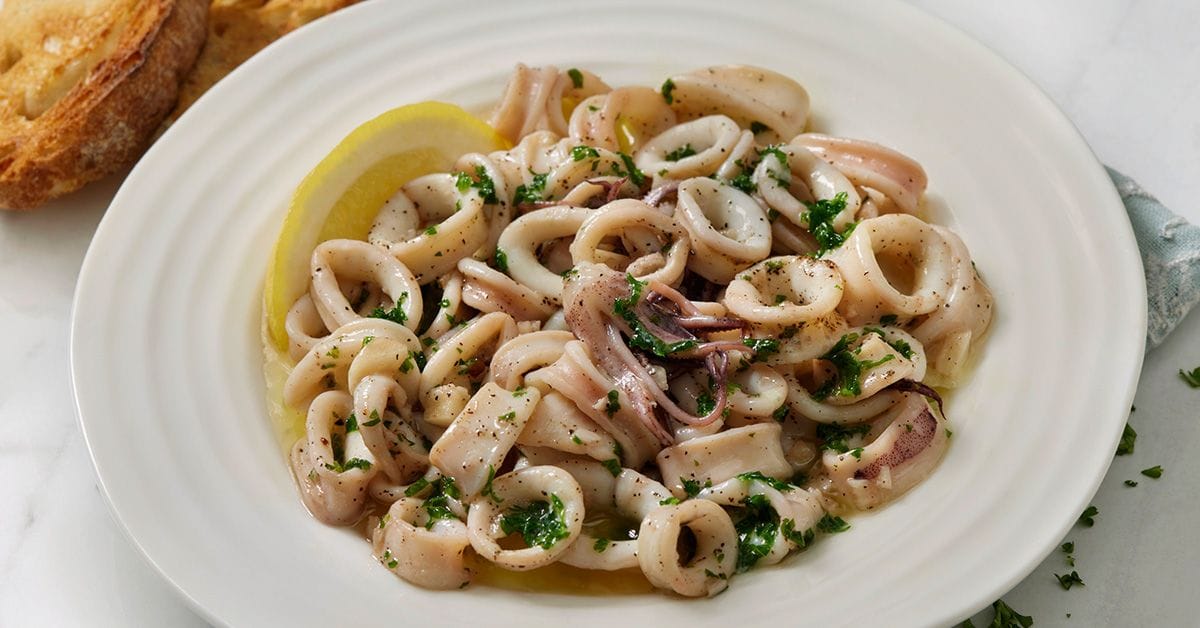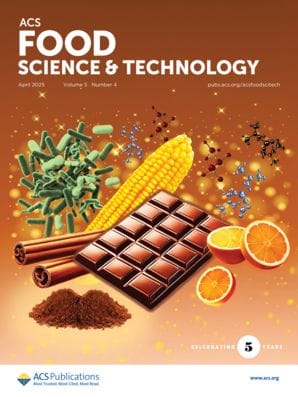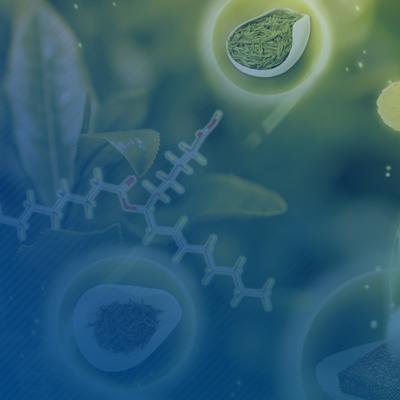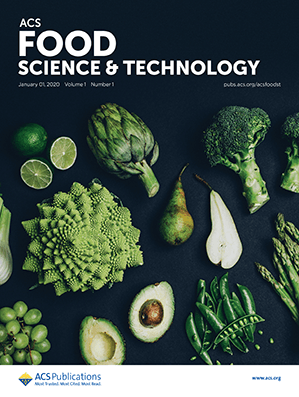3D-printed food might not seem like the most appealing option for sustenance, but with a growing population and increasing pressure on our food systems, harnessing chemistry to recreate animal proteins could be the key to feeding our future. Learn how one team is tackling this challenge with a sustainable seafood alternative.

The global vegan food market was valued at $16.55 billion in 2022 and is projected to more than double by 2030, driven by a variety of factors including ecological sustainability, health consciousness, and ethical dietary choices.1 Chemistry has already contributed to the source, structure, and color of these foods—as well as flavor and texture (for a fun overview, check out the Periodic Graphic on the chemistry of meat alternatives). Plant-based meats replicate the look, feel, and flavor of traditional meat by using proteins, fats, carbohydrates, and other nutrients derived from plants.2 But although there are now many good options for plant-based burgers or chicken products, vegan seafood remains rare.
At the ACS Fall 2023 National Meeting, a team from Singapore presented a new approach for 3D printing vegan seafood mimics that both taste good and maintain the protein-rich nutritional profile of real fish. Since then, they've been updating and improving their methods, which have now been published in ACS Food Science & Technology. In their new article, the team describe their efforts to use plant-based ingredients to mimic calamari, aiming to match its characteristic softness and elasticity.3 To achieve this, they created a protein ink made from microalgae and mung beans. Mung beans are widely used in East and Southeast Asia to make noodles and paste, with byproducts that are ideal for producing protein isolates.4 Microalgae is another sustainable protein source that can be cultivated on nonarable land, with lower freshwater requirements than either animal or plant proteins.5

3D Printing for Seafood Mimic: Factors Impacting the Rheology and Texture of Microalgae and Mung Bean Protein Composite ink
To determine the optimal printability of the protein ink, the researchers mixed the proteins with calcium chloride and a gellan gum at various concentrations. They also investigated the effect of enriched canola oil, since fats are known to influence texture, juiciness, and flavor. Further modifications involved replacing some of the mung bean protein with bead-milled microalgae biomass at concentrations of 10% and 20%. These different ink mixes were 3D-printed to replicate the texture of calamari, with the researchers looking for the right recipe to achieve desirable rheological properties, shear-thinning behavior, and postprocessing stability.
Results showed that the variation in gellan gum improved both viscosity and yield stress of the ink, which are essential for effective extrusion-based 3D printing. The addition of 2% fat and a 10% microalgae concentration optimized the texture, closely mimicking calamari—although higher microalgae concentrations compromised the structural stability under thermal stress. “This research showcases the potential of 3D printing to transform sustainable plant proteins like mung bean and microalgae into seafood analogs with comparable texture,” says Poornima Vijayan, the study’s lead author, in a recent press release. “Our next steps involve understanding consumer acceptance and scaling formulation for broader applications.”
Further explorations: plant-based alternatives
While this may still feel like science fiction to some, the idea of 3D-printed food could come closer to home than simply commercial manufacturing of plant-based products. Some people are predicting we will one day have these appliances in our own kitchens, allowing us to make custom tastes and textures.6
Cultured meat is another option being explored to end our reliance on animal farming. This requires scaffolds to support cell growth, and plant proteins are being explored as the raw materials on which animal cells can grow. A 2024 study in the Journal of Agricultural and Food Chemistry investigated kafirin—an abundant and nonallergenic prolamin extracted from red sorghum—as an option for building plant-based scaffolds with fully interconnected pores.6 In testing, skeletal muscle cells and adipose-derived stem cells from pigs were able to adhere, proliferate, and differentiate on these plant-based protein scaffolds. The team were able to produce a hybrid type of meat by culturing these animal cells on the kafirin scaffolds for 12 days, creating a product with both plant protein- and cell-based ingredients. The anthocyanins found in the red sorghum contributed to meat-like color and antioxidative benefits, and the overall products had 23% protein content and unique mouthfeel and appearance, suggesting this could be a viable option for the future.
Towards achieving zero hunger
These technologies go further than simply meeting consumer desire for vegan foods. Hunger remains one of the most persistent and crucial global challenges. Millions of people worldwide are undernourished, and despite years of progress, the issue continues to worsen. The Sustainable Development Goal of Zero Hunger is a crucial one, and novel ways of creating protein-rich foods will be key to helping achieve this goal. A recent ACS Publications Special Issue, "The Future of Agriculture and Food: Sustainable Approaches to Achieve Zero Hunger," highlights the vital role of agriculture and food in achieving Sustainable Development Goals. Articles in this Special Issue address advances in food or agricultural research which contribute to more robust, plentiful, nutritional, palatable and sustainable food systems. Explore the entire Special Issue below.

The Future of Agriculture and Food: Sustainable Approaches to Achieve Zero Hunger
References
- https://www.statista.com/statistics/1280394/global-plant-based-food-market-value/
- Wang, Y. et al. Recent Advances in the Processing and Manufacturing of Plant-Based Meat. J. Agric. Food Chem. 2023, 71, 3, 1276–1290.
- Vijayan, P. et al. 3D Printing for Seafood Mimic: Factors Impacting the Rheology and Texture of Microalgae and Mung Bean Protein Composite ink. ACS Food Sci. Technol. 2025, 5, 4, 1300–1308.
- Heng, S. Development of Dried Rice-Mung Bean Gluten-free Pasta: Impact of Moisture Content, Ratio of Mung Bean Flour, and Ratio of Pregelatinized Dough on the Microstructure, Cooking Quality, and Textural Properties. ACS Food Sci. Technol. 2025, 5, 4, 1492–1503.
- Ashraf, A. et al. Microalgae-Derived Peptides: Exploring Bioactivities and Functional Food Innovations. J. Agric. Food Chem. 2025, 73, 2, 1000–1013.
- Katsnelson, A. 3D Printers Enter the Kitchen. ACS Cent. Sci. 2021, 7, 12, 1959–1962
- Su, L. et al. Sorghum Prolamin Scaffolds-Based Hybrid Cultured Meat with Enriched Sensory Properties. J. Agric. Food Chem. 2024, 72, 42, 23355–23365.
